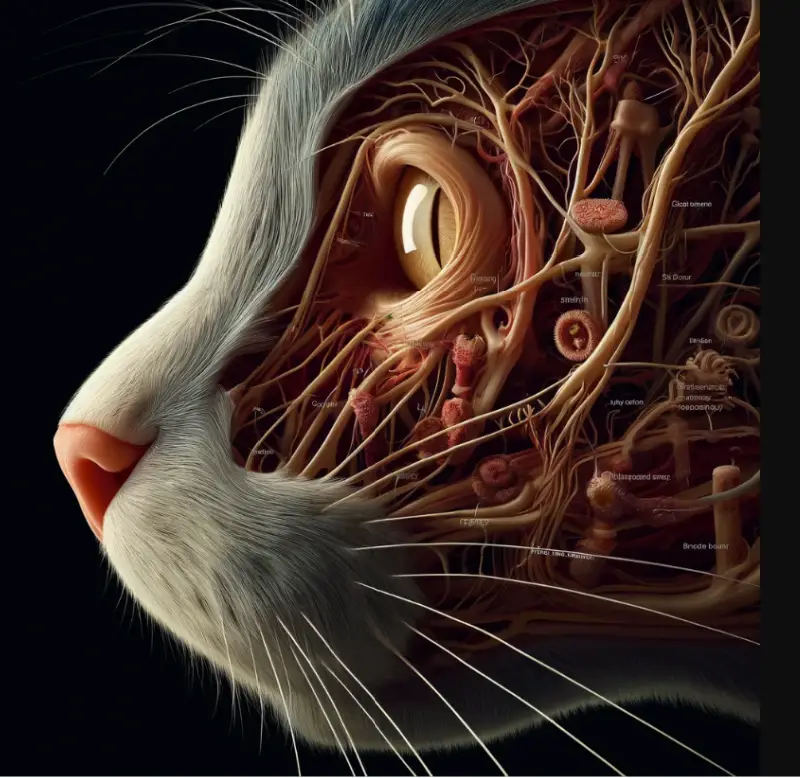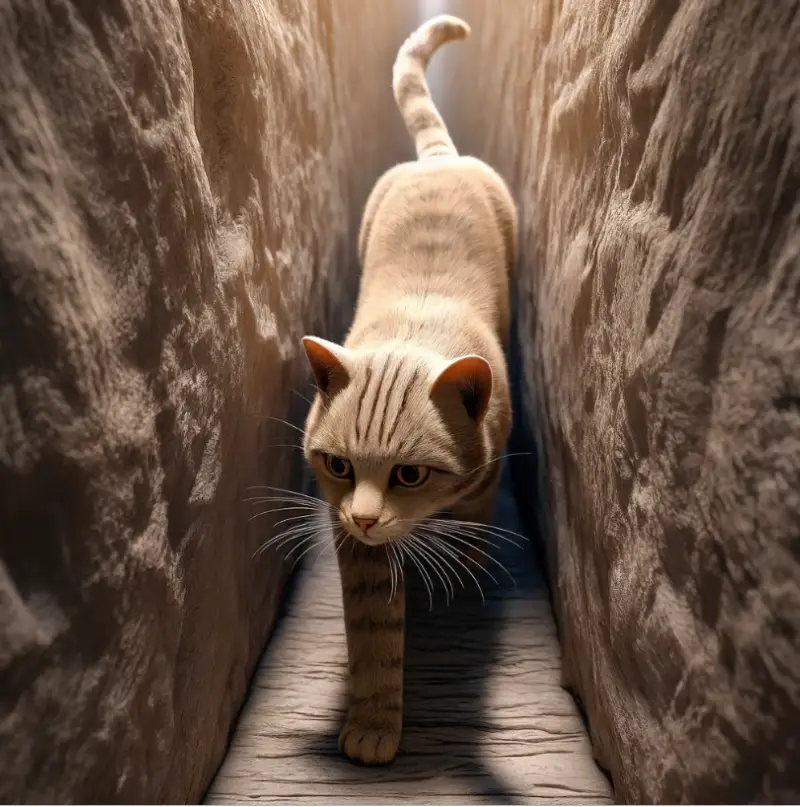[ad_1]
Whiskers, or vibrissae, are one of the vital iconic options of a cat. These lengthy, stiff hairs protruding from their faces aren’t only for present; they’re subtle sensory instruments that play an important function in a cat’s means to navigate and work together with its atmosphere. Understanding the science behind cat whiskers reveals their unimaginable versatility and significance.
Anatomy of Whiskers
Cat whiskers are deeply embedded within the pores and skin, reaching right into a wealthy provide of nerves and blood vessels. In contrast to extraordinary fur, whiskers are coarser and thicker, with roots that reach thrice deeper. This depth ensures that the slightest contact or vibration is transmitted to the sensory cells positioned on the base of every whisker, making them extremely delicate.
Every whisker, also called a vibrissa, is linked to a follicle full of nerves referred to as the proprioceptors. These receptors ship details about the place of the whisker to the mind, permitting the cat to find out the form, measurement, and texture of objects with out having to see them. This method is so refined that it permits cats to navigate by means of slender areas and detect close by objects in the dead of night.
The Operate of Whiskers
Spatial Consciousness
Whiskers play a pivotal function in a cat’s spatial consciousness. The size of the whiskers is roughly equal to the width of a cat’s physique, appearing as a pure gauge for whether or not an area is large sufficient for them to move by means of. That is significantly helpful for navigating by means of tight spots in the dead of night, the place a cat’s wonderful night time imaginative and prescient nonetheless may not be sufficient.
Sensory Notion
Past spatial consciousness, whiskers function an extension of a cat’s tactile sense. They’ll detect minute adjustments within the atmosphere, reminiscent of slight air currents, which helps them sense approaching risks or prey. This sensitivity is essential for looking, because it permits cats to detect the actions of their prey even in full darkness. For example, when a cat is chasing a mouse, the whiskers assist to trace the mouse’s actions, guaranteeing a exact pounce.
Communication and Expression
Whiskers additionally play a task in feline communication and emotional expression. The place and motion of a cat’s whiskers can point out its temper. When a cat is curious or looking, its whiskers are pushed ahead, indicating alertness and focus. Conversely, when a cat is offended or threatened, its whiskers are pulled again towards its face. This refined type of communication is a vital a part of a cat’s physique language.
The Mysteries of Whisker Fatigue
Whisker fatigue is a lesser-known phenomenon that may have an effect on cats. It happens when a cat’s whiskers turn into overstimulated by fixed contact with objects, reminiscent of the perimeters of a meals bowl. This overstimulation can result in discomfort or stress, inflicting cats to refuse to eat from sure bowls or turn into irritable. Offering large, shallow dishes will help mitigate this situation, guaranteeing that their whiskers don’t continually contact the perimeters whereas they eat or drink.
Whiskers in Motion
Observing a cat’s whiskers in motion gives fascinating insights into their utility. When stalking prey, a cat’s whiskers are unfold outwards, forming a forward-facing fan that helps in detecting the exact location and motion of the prey. This positioning additionally permits them to gauge distances precisely, making their pounces more practical.
In one other situation, contemplate a cat navigating by means of a cluttered room. Its whiskers transfer independently, nearly like antennas, brushing towards objects to relay details about the environment. This means to assemble spatial knowledge with out counting on imaginative and prescient is especially useful in low-light situations.
Evolutionary Significance
From an evolutionary perspective, whiskers have given cats a definite survival benefit. Wild cats, like their home counterparts, rely closely on their whiskers for looking and avoiding predators. This evolutionary trait has been preserved and refined over thousands and thousands of years, contributing to the success of felines as each solitary hunters and adaptive creatures able to thriving in numerous environments.
Conclusion
Cat whiskers are extra than simply charming facial options; they’re advanced, extremely delicate devices that play an important function in a cat’s survival and interplay with the world. From aiding in navigation and looking to speaking feelings, whiskers are an indispensable a part of a cat’s anatomy. Understanding the science behind cat whiskers not solely deepens our appreciation for these fascinating creatures but additionally underscores the intricate methods during which nature equips animals with the instruments they should thrive.
So, the subsequent time you see a cat twitch its whiskers, do not forget that there’s a world of sensory data being processed, guiding each transfer with precision and beauty.
[ad_2]
Purringtonpost
2024-05-22 17:56:53
Supply :https://www.thepurringtonpost.com/the-hidden-superpowers-of-cat-whiskers/























